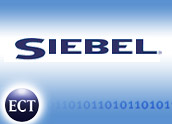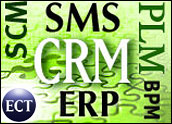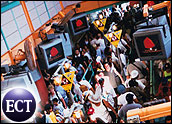
Siebel Branch Teller, a new retail bank solution that invigorates cross sales and customer care at branches, finally brings CRM to the channel that originates most financial services relationships with consumers.
The product, which uses IBM middleware specifically designed for the retail banking vertical, ensures the consistency of customer interactions across branches. It empowers branch employees with information on who a customer is and what transactions she’s made during her relationship with the bank.
This long-missing piece to the CRM game integrates financial transactions with operational CRM — typically the first part of CRM adopted by organizations — and business intelligence or analytics. The enhanced solution helps tellers cross-sell the most appropriate products for bank customers.
Completing CRM
Ashwin Goyal, general manager of Siebel Retail Finance, told CRM Buyer that arming tellers with a comprehensive view of customers as well as access to BI analytics completes the enterprise-wide front-office strategy for retail banks.
In general, the analytics — an addition of four or five years ago to Siebel’s decade-strong operational CRM solution used by more than 350 banks — draws more value from operational CRM.
With the acquisition of Dublin, Ireland-based Eontec this year, Siebel gained the ability to unite wire transfers, check cashing and check deposits at branch tellers with customer records and learned consumer patterns (BI) in a way that the Internet, call centers and ATMs have already begun to do.
Branch as Primary Channel
“Branch interaction is the only remaining face-to-face relationship a bank has with you,” said Goyal. “In the base case, you walk into the branch, cash a check, and walk out of there. In the best-case scenario, a teller sees a very profitable customer. The prompt is that the next best product to offer is a home-equity line of credit, and the teller says, ‘I can set up an appointment right now for you in the bank.'”
Goyal said it costs banks $5.32 to process a simple consumer visit to a branch. “In order to get that money back, they need to expand the relationship they have with you,” he said.
“Banks have to think more like retailers,” he added, differentiating themselves “in store” as the services offered through the Internet and call centers become commodities that all banks offer.
McKinsey Approves
In the past 15 years of retail banking, channels like ATMs and the Internet have reduced average transaction costs by nearly 15 percent, according to McKinsey researchers.
But transaction volumes have more than doubled as people used these self-service channels more frequently than they used to visit their local branches. The result has been an increase in the overall cost of serving individual customers.
Rather than cut customers off from favored channels, banks need to sell deeper through branch representatives, then guide consumers to more cost-effective channels during the product adoption and use process. McKinsey principals Joseph Myers, Andrew Pickersgill and Evan Van Metre have found that this approach can reduce the cost-to-serve by 10 percent to 15 percent while increasing revenue from existing customers by 15 percent to 20 percent.
IBM’s Role
IBM lends expertise gained during its many years as one of Eontec’s leading partners, especially in the development of the latter company’s front-end retail bank branch solution. “This really rounds out our full branch solution,” said Bryan Lee, retail banking solutions manager for IBM’s global financial services industry practice.
IBM, which has implemented similar solutions in Europe and has three generations of retail banking experience under its belt, is helping Siebel define its CRM offering in verticals such as retail banking.
“There is a lot of talk about banks’ challenges in increasing customer service and sales out of the branch. It is a change in what the branch is for and how it works,” Lee told CRM Buyer.
“A lot of profit for banks comes from the retail side,” he continued. Siebel’s Branch Teller “is an attempt to change over what the branch has been doing [in order] to fuel profits and gather deposit accounts. Siebel’s ability to implement technology at the point of teller transaction processes that change for banks interacting with customers at branches. It creates value for the customer.
“There haven’t been a huge number of banks that have been able to detail offers at the branch effectively and in a timely manner,” he said. The replacement of printed manuals for time-consuming teller training with analytics about customers makes sense to branch representatives who can see the connection between a customer’s current relationships with the bank and the products the CRM system recommends selling next. This means tellers sell more enthusiastically and customers likely engage with new bank products more readily because they, too, understand the relationship-building approach their branches are taking.
“Siebel Branch Teller can take the banks a long way, but they still have a long way to go to understand the customer,” Lee concluded.






















































